Is it worth growing Welsey apple trees?
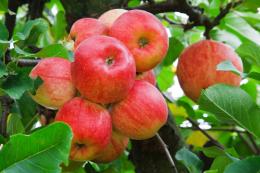
This “Welsey” variety was bred using the seeds of the Siberian cherry apple tree in America in 1860. The fruits of the tree ripen by winter. After a long and careful study of the “Welsey” variety in Oryol and other fruit and berry centers at nurseries, the spread of this tree began in Russia.
According to documents from the Register of government institutions where the selection of fruit plants is carried out and studied, “Welsie” became zoned and was allowed for breeding in the Central, Lower Volga, Central Black Earth, North Kavaz and North-Western regions.
Content:
Description of the variety
The plant is a medium-sized tree with a wide-pyramidal crown at a young age, and rounded at an average age. The branches are raised upward and have drooping ends. The main branches can break due to a heavy harvest due to the fact that they grow upward at an acute angle. Fertile apple tree type mixed, this means that it has many fruit bags that are “sessile”. The buds of this variety are convex, drooping, and quite large in size. There are many lentils, they have a round round shape. Young shoots are moderately drooping, have a brown color and average thickness of branches. When grown in a nursery environment, the apple tree does not grow too quickly. The leaves are small, less often medium-sized, their apex is twisted.The leaves have a dark green color, a distinct shine, clearly palpable leatheriness and crenate, highly wavy edges. The stipules are medium in size and lanceolate in shape. Annual plants in nursery conditions grow with thin, drooping branches.
During flowering, medium-sized flowers with light pink hues are observed.
Before flowering, the buds turn light purple. The petals of "Welsey" flowers are pink and white. The petals of the flower are not separated.
Welsey apple fruits
In the south of Russia, the fruits of the tree ripen in the fall, in other regions - by winter. Their shape is close to turnip-shaped (flattened), less often - rounded-flattened, the size is average and below average.
- During the period of ripeness, the Welsh apple has a yellow-green color; in the phase of full (or consumer) ripening, the fruit acquires a golden hue.
- The color of the integument is accompanied by a dark red background or has dirty red stripes on the surface of the peel.
- The fruit has pronounced subcutaneous points.
- The peel is dense, but not hard, the surface is smooth.
- The funnel near the stalk is deep and cone-shaped. The stalk itself is long and thin.
- The core is small in size with closed seed chambers.
- The color of the seeds is dark brown and their shape is pointed.
- The flesh of the fruit is often white, less often greenish, and sometimes has red veins.
- The fruit tastes sweet and sour and has a subtle, refined aroma. The taste of apples directly depends on the condition of the tree, as well as the weather conditions in which they grew. In years with little sunshine, a grassy taste may appear.
- The fruits are not very firmly attached to the tree.
- The ripening time of fruits, for example, in the Oryol region is the second half of September - early October. It is extremely important to remove the harvest from the tree on time, otherwise this risks significant shedding of most of the fruits and their subsequent rapid spoilage.
- Storage period - until the end of the second half of February. The place where apples are stored must have sufficient humidity, otherwise they will quickly wither and wrinkle.
- The fruits are suitable for preparing raw materials for the production of pulp and juices, as well as for fresh consumption.
- The tree begins to bear fruit 4-5 years after planting, which is why the variety is called early-fruiting.
- The maximum recorded yield from one tree was 275 kg.
- The frequency of fruiting is considered weak.
- The variety is moderately resistant to winter frosts and is also highly resistant to scab.
Pros and cons of the variety
Advantages of planting this variety:
- rich yield,
- excellent taste of apples,
- resistance to transportation,
- excellent preservation,
- high resistance to scab.
Disadvantages of planting this variety:
- not very winter-hardy in the conditions of the Central region,
- possible shedding of fruits before harvesting,
- crushing fruits during high harvest periods,
- taste changes depending on weather and region.
With the help of "Welsey" more than 30 new tree species, both in our country and abroad. These include Aelita, Student, Cinnamon new, Memory of a warrior, Altai ruddy, Prima and others.
Chemical composition of apples:
- Titratable acids - 0.61%,
- Total sugars - 10.1%,
- P-active substances - 185.1 mg/100g,
- ascorbic acid - 10.2 mg/100g,
- pectin substances - 10.5%.
The best varieties of apple trees:

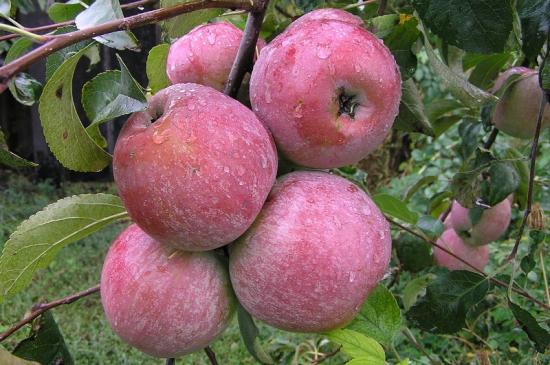
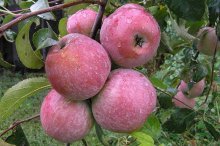
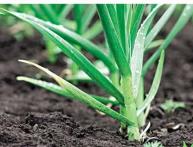

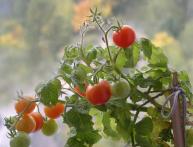
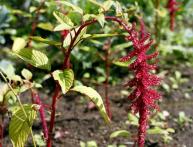


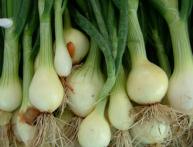
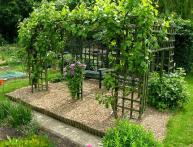
Comments
This variety is very good, but unfortunately it only lived with us for 10 years. It turns out that in this apple tree the roots grow very deep, and if they reach clay or another substrate other than the ground, then the tree gradually begins to dry out and die. And what a good apple tree it was (